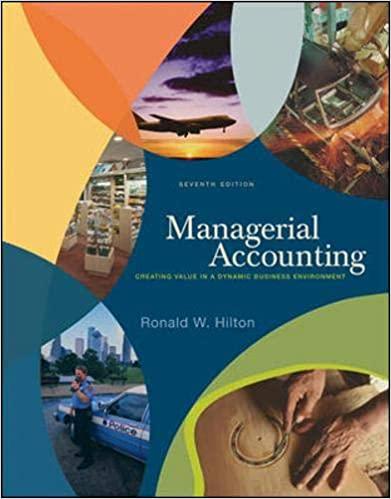Ontario, Inc. manufactures two products, Standard and Enhanced, and applies overhead on the basis of direct-labor hours.
Question:
Ontario, Inc. manufactures two products, Standard and Enhanced, and applies overhead on the basis of direct-labor hours. Anticipated overhead and direct-labor time for the upcoming accounting period are $800,000 and 25,000 hours, respectively. Information about the company’s products follows.
Standard:
Estimated production volume, 3,000 units
Direct-material cost, $25 per unit
Direct labor per unit, 3 hours at $12 per hour
Enhanced:
Estimated production volume, 4,000 units
Direct-material cost, $40 per unit
Direct labor per unit, 4 hours at $12 per hour
Ontario’s overhead of $800,000 can be identified with three major activities: order processing ($150,000), machine processing ($560,000), and product inspection ($90,000). These activities are driven by number of orders processed, machine hours worked, and inspection hours respectively. Data relevant to these activities follow.

Top management is very concerned about declining profitability despite a healthy increase in sales volume. The decrease in income is especially puzzling because the company recently undertook a massive plant renovation during which new. highly automated machinery was installed—machinery that was expected to produce significant operating efficiencies.
Required:
1. Assuming use of direct-labor hours to apply overhead to production, compute the unit manufacturing costs of the Standard and Enhanced products if the expected manufacturing volume is attained.
2. Assuming use of activity-based costing, compute the unit manufacturing costs of the Standard and Enhanced products if the expected manufacturing volume is attained.
3. Ontario’s selling prices are based heavily on cost.
a. By using direct-labor hours as an application base, which product is overcosted and which product is undercosted? Calculate the amount of the cost distortion for each product.
b. Is it possible that over costing and under costing (i.e., cost distortion) and the subsequent determination of selling prices are contributing to the company’s profit woes? Explain.
Step by Step Answer:






